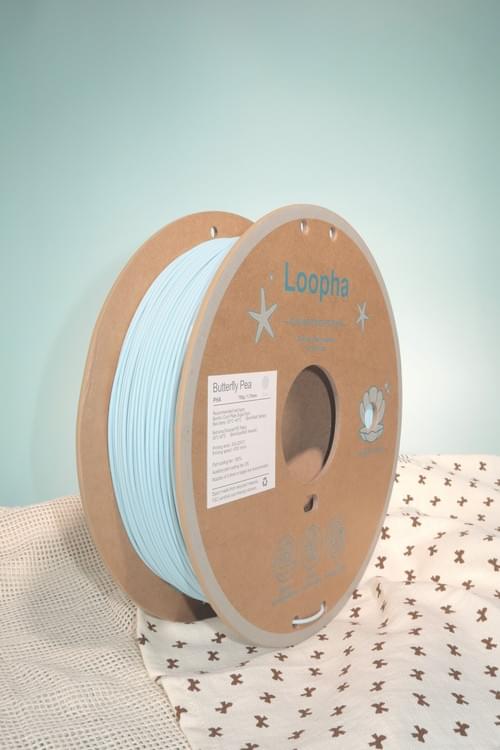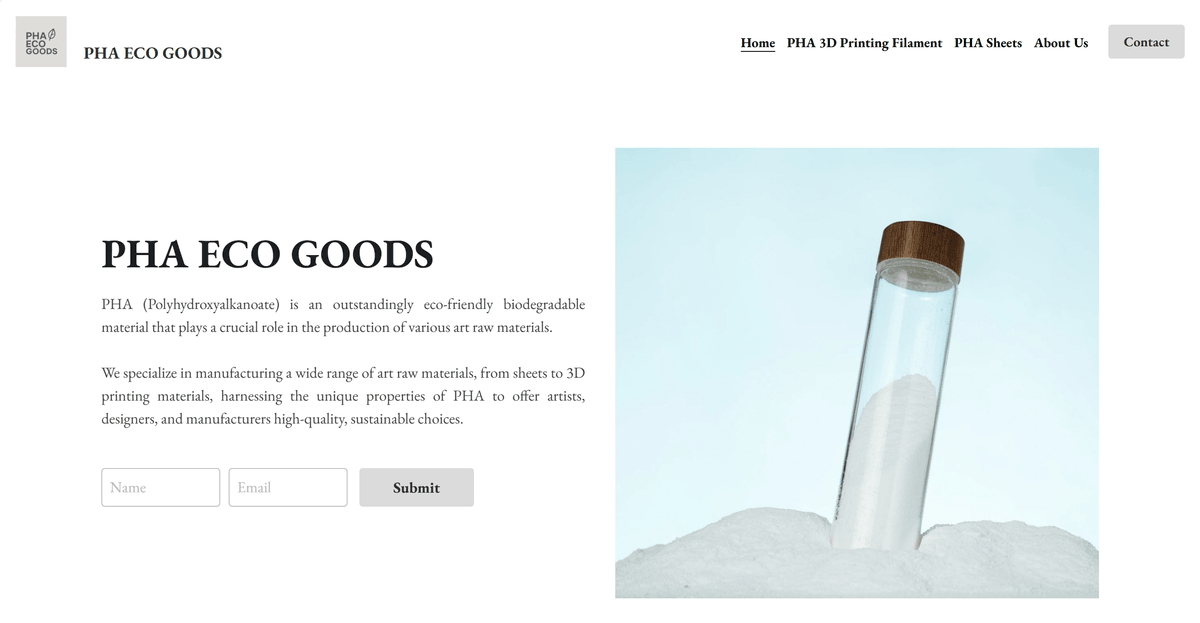
Loopha™ PHA 3D Printing Filament (Butterfly Pea)
$24.99
Loopha Filament: Where High Performance Meets Planet-Positive Design
Loopha isn’t just another 3D printing material—it’s a statement. Engineered for excellence, Loopha offers superior heat resistance, low moisture absorption, and exceptional toughness, making it ideal for demanding applications that require durability without compromise. Its resistance to dampness and brittleness ensures reliable performance across diverse environments.
But Loopha’s true innovation lies in its sustainability. As the world’s only bio-based filament that naturally degrades in all environments—from marine ecosystems to home compost bins—it sets a new benchmark for eco-friendly manufacturing. Free from microplastics, non-toxic, and enabling zero-waste printing, Loopha empowers creators to build responsibly without sacrificing quality.
What truly sets Loopha apart is its sensory experience. Infused with natural biomass residues like coffee grounds, tea leaves, and orange peels, each print carries a subtle organic texture, scent, and visual depth that conventional plastics simply can’t replicate. Its signature matte gel-like finish offers a soft, refined luster—elevating your product from functional to premium.
Loopha transforms everyday objects into symbols of sustainability and forward-thinking design. Whether you're a brand seeking differentiation or a maker committed to impact, Loopha delivers more than performance—it delivers purpose.
Printing Guide
PHA filament is prone to warping, with noticeable bridging and overhang challenges. Its printability falls between PLA and TPU, requiring careful calibration and tuning. Please contact us if you encounter any issues during the printing process.
Due to its relatively soft nature, PHA filament is not compatible with AMS (Automatic Material System) feeding.
Enclosed printing is not recommended, as it may cause nozzle clogging. Use with the glass front door or top cover open.
While PHA is naturally hydrophobic and resistant to moisture-induced brittleness, the embedded biomass particles may absorb moisture in high-humidity environments. If print quality decreases or bubbling sounds occur during printing, it is recommended to dry the filament before use (65 °C, 4 h).
Recommended printing temperature: 220 °C. If layer adhesion is weak, a higher temperature and printing speed may be applied.
Recommended nozzle size: 0.4 mm or larger.
This filament is compatible with most common FDM 3D printers such as Bambu Lab and Creality.
About Aroma: Loopha filaments contain no added fragrance; all scents are naturally derived from the raw materials. Among them, tea-powder filaments exhibit the most noticeable tea aroma, while spirulina-based filaments may release a seaweed-like scent when in contact with hot water. Please take this into consideration before purchasing.
As PHA is a bio-fermented material and is sensitive to processing temperature, we cannot guarantee identical printing parameters for every batch. Precise settings depend on the specific batch and ambient conditions. We recommend calibration before use, in the sequence: Temperature Tower → Flow Rate Adjustment → Dynamic Flow Calibration.
Filament Specifications
- Net weight: 750 g
- Diameter: 1.75 mm
- Length: 240 m
Build Plate Settings
- Recommended plate: Bambu Cool Plate SuperTack
- Suggested temperature: 20 °C – 45 °C
- Adhesion method: Brim or Raft (recommended)
- Alternative plate: Textured PEI Plate
- Suggested temperature: 45 °C – 60 °C
- Adhesion method: Brim, Adhesive, or Raft (recommended)
Printing Settings
- Printing temperature: 205 °C – 230 °C (recommended: 220 °C)
- Printing speed: ≤ 300 mm/s
- Flow rate adjustment:
- PHA is sensitive to processing temperature
- Optimal parameters may vary by region
- Calibration testing is required
Cooling Fan Settings
- Part cooling fan speed: 100%
- Auxiliary part cooling fan speed: 0%
Brim & Support Settings
- Brim width: 10 mm
- Brim to model gap: 0 mm
- Elephant foot compensation: 0 mm
- Top Z-distance: 0.25 mm
- Support/model XY distance: 0.5 mm
- Recommended practice:
- Print one raft layer with PLA
- Switch to PHA to minimize warping
Physical Properties (Injection-Molded Specimens)
- Tensile strength: 16–19 MPa
- Tensile modulus: 950–1200 MPa
- Elongation at break: >50%
- Notched Izod impact strength: 5–15 kJ/m²
- Flexural strength: 16–23 MPa
- Flexural modulus: 700–1100 MPa



